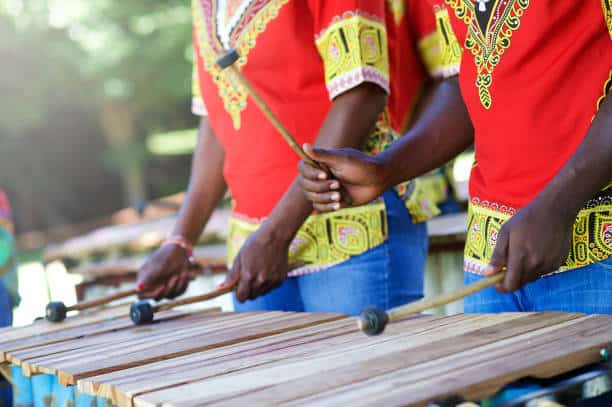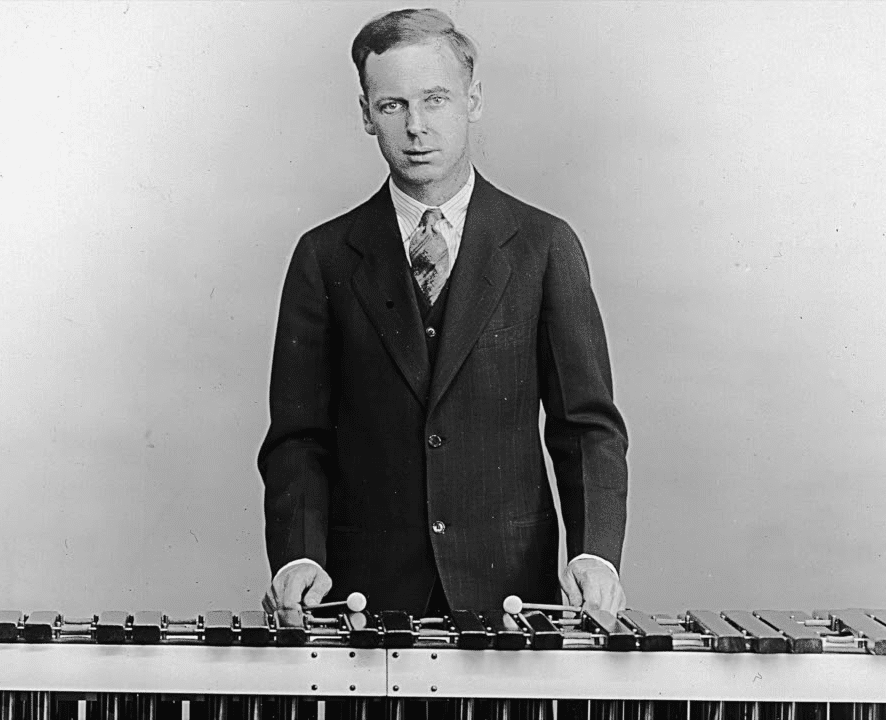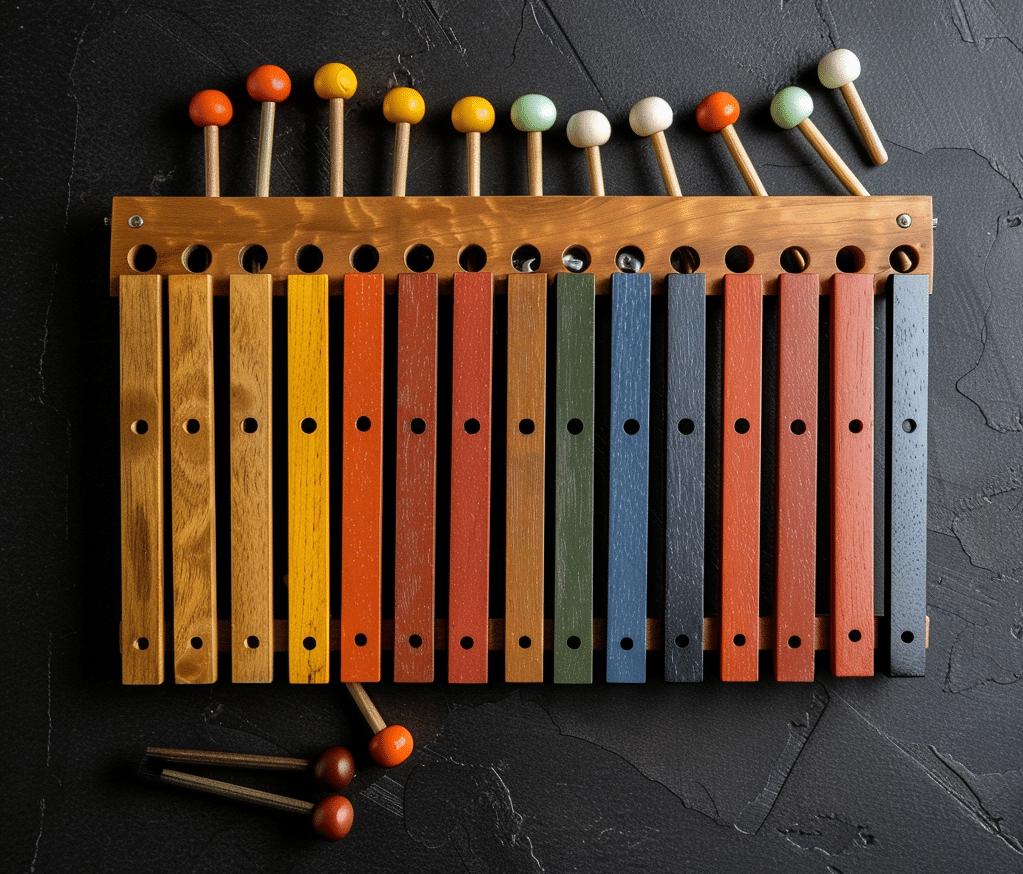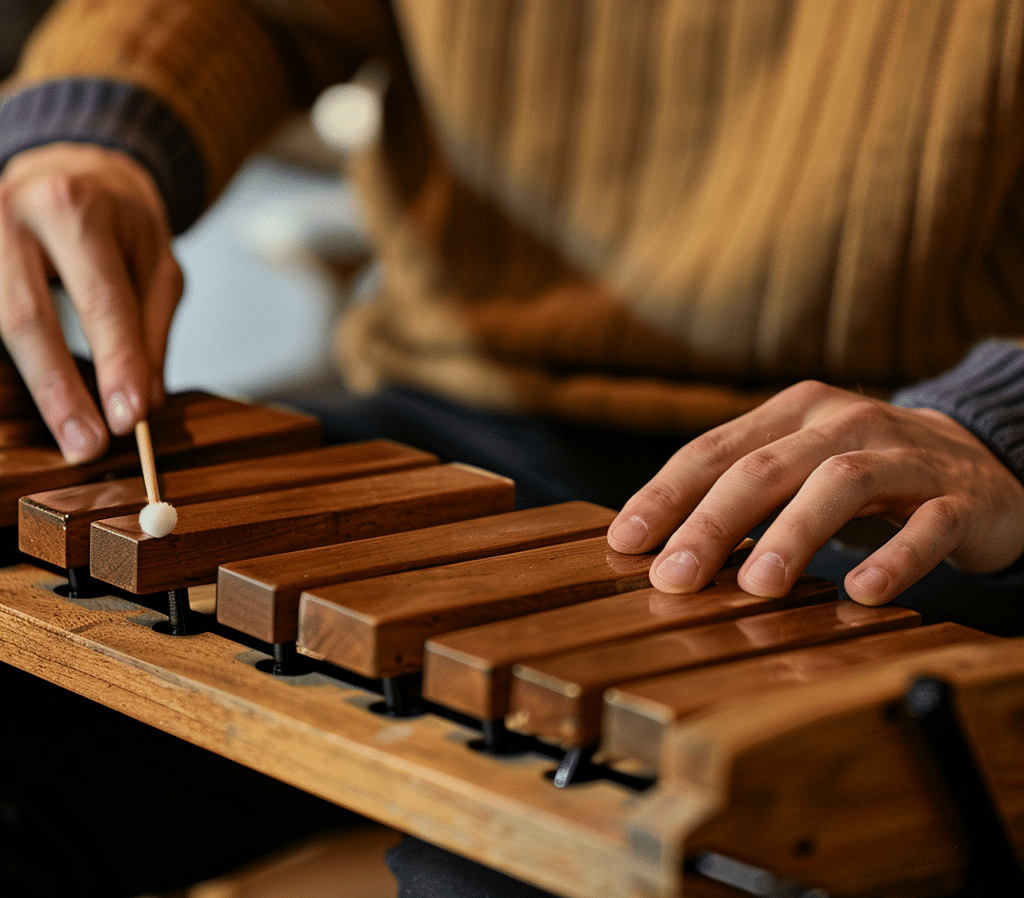Music has a remarkable power to cross borders and bring cultures together. The xylophone is one instrument that has beautifully contributed to this connection.
With its beautiful melodies and lively rhythms, the xylophone has captured people’s hearts worldwide for hundreds of years.
This unique percussion instrument has left a lasting impression on the diverse musical traditions of many cultures worldwide.
Prepare to start on a thrilling journey as we unravel the fascinating history, explore the profound cultural significance, and celebrate the influential players who have shaped this remarkable instrument’s enduring legacy.
Prepare yourself for a musical exploration that will deepen your appreciation for the xylophone’s timeless attraction.
History and Evolution of The Xylophone
This section traces the xylophone’s ancient origins, explores how it evolved across different cultures and highlights major advancements in its design and construction methods.
Ancient Origins and Early Development
The xylophone’s origins can be traced back to ancient civilizations worldwide, where primitive instrument versions were utilized in rituals and ceremonies.
Archaeological discoveries have uncovered wooden bar instruments resembling the xylophone in several ancient cultures, including West Africa, Southeast Asia, and Central America.
While the exact dates of its inception remain uncertain, the xylophone’s widespread presence in these early societies indicates its longstanding cultural significance and enduring appeal as a musical instrument.
Its ancient roots highlight the xylophone’s ability to transcend boundaries and resonate with diverse communities throughout human history.
Evolution Across Different Cultures
As the xylophone spread across the globe, different cultures adapted and transformed it, reflecting their unique musical traditions and influences.
In West Africa, the balafon, a type of xylophone, became deeply ingrained in traditional music and ceremonies, showcasing the instrument’s cultural significance in the region.
Similarly, in Southeast Asia, instruments like the gambang kayu (Indonesian xylophone) and MYEONGCHANG 25note (Xylophone for kids in Korea) emerged, demonstrating how the xylophone was involved and customized to suit local musical styles.
Advancements in Design and Construction
Over time, the design and construction methods of the xylophone have undergone significant advancements.
Early versions were typically crafted from simple wooden bars, but later innovations introduced more durable materials like metal and synthetic compounds, improving the instrument’s sound quality and longevity.
The introduction of resonator tubes or pipes beneath the bars amplified and enriched the sound, while advancements in tuning techniques allowed for greater musical versatility and expression.
Skilled craftsmen and manufacturers have continuously refined the xylophone’s design, incorporating improved bar layouts, adjustable resonators, and more precise tuning mechanisms to enhance its performance capabilities.
Cultural Relevance of Xylophone
Explore the xylophone’s profound role in various cultural traditions worldwide, its influence on contemporary music styles, and its symbolic meanings and significance in artistic contexts.
Exploration of The Xylophone’s Role in Various Cultural Traditions

The xylophone’s cultural significance is deeply ingrained in numerous traditions worldwide. In West Africa, it holds a revered place in ceremonial music and rituals.
The gyil, a type of xylophone played by the Dagara people of Ghana and Burkina Faso, is an integral part of their cultural identity and is used in various ceremonies, including funerals and initiation rites.
Similarly, the balafon, a xylophone from the Mande peoples of Mali, Guinea, and Ivory Coast, is a central instrument in traditional music and storytelling.
The xylophone has been essential to various cultures in Southeast Asia for centuries. The ranat ek, a Thai xylophone, is a key instrument in the traditional Thai classical music ensemble accompanying dance performances and ceremonies.
The gambang, an Indonesian xylophone, is deeply rooted in the Javanese and Sundanese cultures and is often used in gamelan ensembles and traditional performances.
Influence on Contemporary Music Styles
The xylophone’s unique sound has transcended its traditional roots and has been adopted by contemporary musicians across various genres, adding depth and texture to their compositions.
In popular music, the xylophone’s distinctive tones can be heard in hits like “Walking on Sunshine” by Katrina and The Waves, “Karma Police” by Radiohead, and “Clocks” by Coldplay, among others.
In classical music, composers like George Gershwin, Béla Bartók, and Steve Reich have incorporated the xylophone into their works, creating innovative and fascinating pieces that showcase the instrument’s versatility.
Film scores, such as John Williams’s theme from Harry Potter and the Prisoner of Azkaban and Yann Tiersen’s soundtrack of Amélie, have also featured the xylophone’s enchanting melodies, adding a whimsical and dreamlike quality to the cinematic experience.
Symbolism and Significance in Cultural Contexts
Beyond its musical applications, the xylophone holds deep symbolic meanings and significance in various cultural contexts. In many African societies, the instrument is believed to possess spiritual powers and is used in rituals and ceremonies to communicate with ancestors.
Among the Kassena people of Burkina Faso, the xylophone is considered a sacred instrument, and its players are highly respected for their ability to connect with the spiritual realm.
In certain indigenous communities of Central America, such as the Maya and Aztec civilizations, the xylophone was regarded as a sacred object, representing the connection between humans and the natural world. Its sound was believed to have the power to invoke spirits and communicate with the divine.
Furthermore, playing the xylophone is not merely a musical performance but also a way to preserve cultural heritage, pass down oral histories, and foster community cohesion.
In many traditional societies, xylophone players are revered as storytellers and keepers of cultural knowledge. They use the instrument to convey tales, myths, and ancestral wisdom to new generations.
Notable Xylophone Players in History

Celebrating the musical geniuses who have mastered the xylophone across eras and cultures. This section introduces legendary xylophone players, highlights their groundbreaking contributions to popularizing and evolving the instrument, and explores their profound impact on the music industry and education.
1. Influential Xylophone Performers Worldwide
Throughout history, numerous talented individuals have left an indelible mark on the world of xylophone music.
Among the most renowned and influential figures in the history of the xylophone is George Hamilton Green, rightfully hailed as the “Father of the Xylophone.”
Born in 1893, this American musician and inventor revolutionized the instrument, taking it from its humble beginnings to new heights of artistry and popularity.
Green’s innovative designs and playing techniques transformed the xylophone from a novelty act into a legitimate solo instrument.
Green introduced the xylophone to classical music circles through his virtuosic performances and compositions, paving the way for its acceptance as a respected concert instrument.
Green’s legacy extends far beyond his technical contributions. His passion for the xylophone inspired countless musicians, and his teachings at prestigious institutions like the Juilliard School nurtured generations of talented xylophonists, solidifying his place as the true pioneer and visionary of the modern xylophone.
2. Their Contributions to The Instrument’s Popularity and Development
Influential xylophone players have played a crucial role in popularizing the instrument and advancing its development.
Through fascinating performances, recordings, and collaborations with artists from diverse genres, they have introduced the xylophone to new audiences and inspired generations of musicians.
Players like Keiko Abe, a Japanese xylophone expert, have pushed the boundaries of technique and repertoire, composing numerous pieces that showcase the instrument’s versatility and expressive range.
3. Impact on The Music Industry and Education
Influential xylophone players’ impact extends far beyond their performances and recordings. Many have significantly contributed to the music industry and education, shaping how the instrument is perceived and taught.
Performers like Bob Becker, an American xylophone soloist and educator, have promoted the xylophone in various settings, from concert halls to educational institutions.
Their efforts have enriched music education, contributed to preserving cultural traditions, and promoted cultural exchange and understanding.
Beginner’s Guide to Learning Xylophone
This helpful guide covers the basics of the xylophone’s structure and mechanics, step-by-step instructions for beginners, and tips for effective practice and skill development.
Understanding the Basic Structure and Mechanics of The Xylophone
For those new to xylophone playing, it’s essential to understand the instrument’s basic structure and mechanics.
A xylophone typically consists of a series of wooden bars arranged in a specific scale, with each bar producing a distinct pitch when struck with a mallet.
The bars are typically placed within a particular order, with the shorter bars producing higher pitches and the longer bars producing lower pitches.
Step-By-Step Instructions for Beginners
Step 1: Get the Right Gear

Begin your xylophone journey by investing in a well-made instrument and a set of mallets that suit your skill level and grip comfortably. Choosing the proper gear will lay a solid foundation for your learning experience.
Step 2: Master the Basics

Begin by learning how to hold the mallets and strike the bars properly. Practice striking the bars with a controlled, balanced motion, focusing on developing a consistent stroke. Familiarize yourself with the layout of the bars and the corresponding notes.
Step 3: Develop Technique

As you progress, explore different playing techniques like rolls and dampening. Work on proper hand positioning and develop a good sense of rhythm and timing: practice scales and simple exercises to build agility and coordination.
Step 4: Consistent Practice

Consistent practice is crucial for mastering the xylophone. Gradually increase the complexity of the pieces you practice, starting with simple melodies and progressing to more challenging compositions. Consider seeking guidance from instructors or online resources.
Step 5: Prevent Injuries
Incorporate regular stretching exercises and maintain proper posture to ensure a comfortable playing experience and prevent injuries. Listen closely to your playing and make necessary adjustments to improve your technique and expression.
Remember, learning the xylophone takes time, patience, and dedication. By following these basic steps and consistently practicing, you’ll be well on your way to becoming a skilled xylophone player.
Top 5 Xylophones to Buy Online
An overview of highly rated xylophone models available for online purchase, key features to consider when selecting an instrument, and advice on reading reviews for informed buying decisions.
If you’re in the market for a quality xylophone, here are some top-rated models to consider for your online purchase:
1. Musser M66 Xylophone: This model is highly praised for its exceptional craftsmanship and rich, resonant tone. It’s a great choice for serious musicians and professionals.
2. Sonor SX K Xylophone: This versatile option suits beginner and experienced players. It is known for its playability and durability.
3. Yamaha YX-135 Xylophone: Offering excellent value for its quality and features, the Yamaha YX-135 is a popular choice among students and those on a budget.
4. Percussionplus 3.5 Octave Xylophone: This model from Percussionplus is well-regarded for its accurate tuning, excellent projection, and sturdy construction.
5. Rhythm Band Compact Xylophone: This lightweight, easy-to-transport xylophone is a great portable option for beginners and music educators.
When purchasing a xylophone online, consider factors such as the range of notes, materials used for bars and resonators, overall build quality, and included accessories like mallets and cases.
Reading reviews from reputable sources and experienced players can also provide valuable insights into an instrument’s sound quality, playability, durability, and overall value.
Final Thoughts
The xylophone’s remarkable journey through centuries and across continents showcases the universal power of music to connect people beyond borders and cultures.
From its ancient roots to its modern-day adaptations, this fascinating instrument has brought joy, preserved cultural heritage, and inspired artistic expression worldwide.
As we reflect on the xylophone’s profound impact, we are reminded of music’s ability to unite humanity, transcend boundaries, and form lasting connections that span generations.
Whether you’re a seasoned musician or a newcomer, exploring the xylophone’s rich history is an opportunity to embark on a delightful musical adventure that summarizes the depth of human experience and cultural diversity.
Let the enchanting melodies of the xylophone remind us of the beauty of embracing and celebrating our shared love for music.
